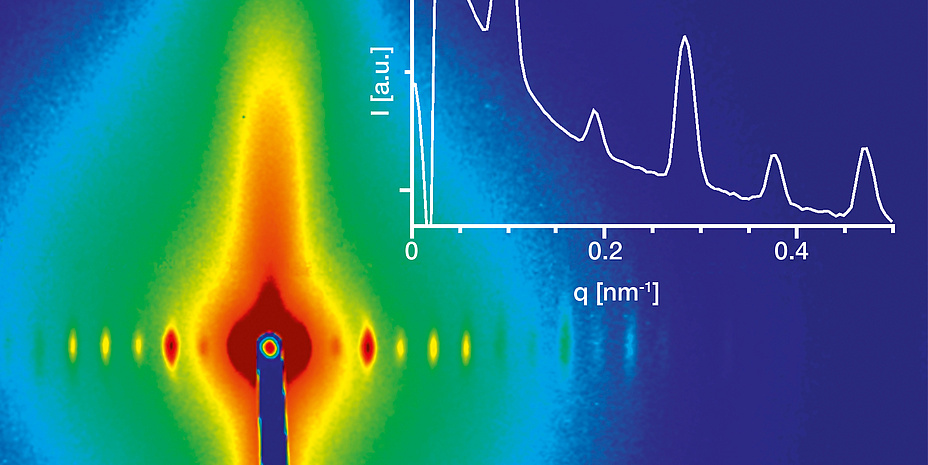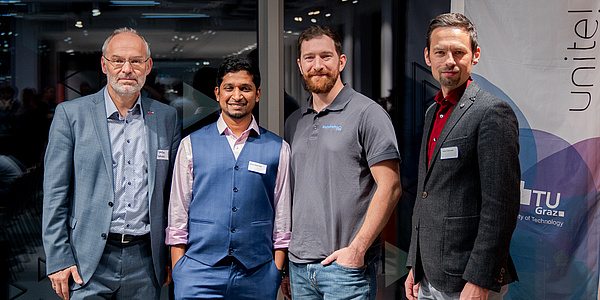X-ray Views into the Nanoworld: International SAXS Community Celebrates in Graz

The Kratky camera was invented at the University of Graz by physical chemist Otto Kratky. In co-operation with measurement technology specialist Anton Paar from Graz, the camera – and with it also the SAXS method – set out on a road to worldwide success 60 years ago. The interest in the SAXS method in the scientific community is as strong as ever. From 26 to 27 September 2017, 140 representatives from research institutions and industry will meet at Graz University of Technology (TU Graz) to celebrate the <link https: www.anton-paar.com tu-graz saxs-excites _blank int-link-external external link in new>International SAXS symposium 2017.
Development of new active ingredients thanks to SAXS
Long considered a purely scientific method, SAXS is now firmly established as a vital element in modern analytics and applied research in the industrial environment. In the field of biomedical research, the method helps us to understand the stability and mode of action of biomolecules such as proteins, enzymes and antibodies. This in turn paves the ground for developing new pharmaceutical ingredients and medication. Styrian analysis instrument manufacturer Anton Paar is committed to the constant further development of the SAXS method in co-operation with science and industry. According to Petra Kotnik, Head of the Material Characterization Division at Anton Paar, “the analysis of nanoparticles in environmental samples is one of the future applications of the SAXS method. Nanoparticles enter our environment as ingredients of cosmetic products, detergents, solar cells and other products of daily life. With the SAXS method we are able to gain a better understanding of nanoparticle distribution and their toxicity.”CentralLab at TU Graz
The close relationship between NAWI Graz, the inter-university co-operation in natural sciences of the University of Graz and Graz University of Technology, and Anton Paar in the field of small-angle X-ray scattering has a long tradition. So far, however, their co-operation in the special field of “smart materials“ has been limited to a few selected projects. But this is about to change. At the Campus of TU Graz, a CentralLab for the synthesis and characterization of “soft materials” is now being set up with Higher Education Area Structural Funds. Frank Uhlig from TU Graz and Martin Mittelbach from the University of Graz, both members of the NAWI Graz Steering Committee, report the following on the new research co-operation: “We are equipping the CentralLab together with Anton Paar. It provides material researchers from NAWI Graz with a research infrastructure that ideally complements the existing facilities.” Researchers can additionally take advantage of the Austrian SAXS beam line of TU Graz at Elettra Synchrotrone in Trieste to perform more detailed analyses.Internationally renowned Styrian invention
Physical chemist Otto Kratky, professor at the University of Graz between 1946 and 1972, is regarded as one pioneer of small-angle X-ray scattering and established Graz as an internationally renowned centre in this field. Kratky invented and developed the first compact small-angle X-ray camera known as the Kratky camera. Since Ulrich Santner, founder and Senior CEO of measuring technology specialist Anton Paar from Graz, took over production and marketing of the Kratky camera exactly 60 years ago, this analysis method started its worldwide success. Today this technology still is an important part of highly innovative, fully automatic and compact laboratory X-ray equipment. Anton Paar introduced SAXSpoint 2.0, the latest generation of the analysis device, in the market in 2017.
Kontakt
Univ.-Prof. Dipl.-Chem. Dr.
TU Graz | Institute of Inorganic Chemistry
Phone: + 43 316 873 32100
Email: <link int-link-mail window for sending>frank.uhlig@tugraz.at
Petra KOTNIK
Dr.
Material Characterization
Anton Paar GmbH
Phone: +43 316 257 2700
Email: <link int-link-mail window for sending>petra.kotnik@anton-paar.com
<link http: www.anton-paar.com _blank int-link-external external link in new>www.anton-paar.com




